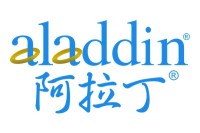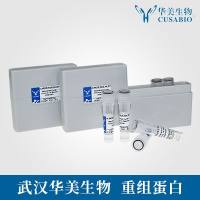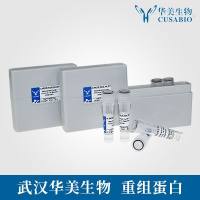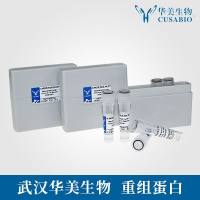Studies of the Ubiquitin Proteasome System
互联网
- Abstract
- Table of Contents
- Materials
- Figures
- Literature Cited
Abstract
A concept that has arisen over the last decade is that proteins can, in general, be covalently modified by polypeptides, resulting in alterations in their fate and function. The first?identified and most well studied of these modifying polypeptides is ubiquitin. Although targeting for proteasomal degradation is the best studied outcome of ubiquitylation, we now understand that modification of proteins with ubiquitin has numerous other cellular roles that alter protein function and that are unrelated to proteasomal degradation. Ubiquitylation is a complex process that is regulated at the level of both addition and removal of ubiquitin from target proteins. This unit includes a number of different basic protocols that will facilitate the study of components of the ubiquitin system and substrate ubiquitylation both in vitro and in cells. Because another protein modifier, NEDD8, itself regulates aspects of the ubiquitin system, basic protocols on neddylation are also included in this unit.
Keywords: Ubiquitin; ubiquitylation; proteasomal degradation; protein modification; NEDD8; E1; E2; E3
Table of Contents
- Assays of E1 and E2 Activity
- Basic Protocol 1: Thiolester Formation Between Rabbit E1 and Ubiquitin
- Basic Protocol 2: Thiolester Formation Between E2 and Ubiquitin
- Binding of Ubiquitin‐Proteasome Proteins
- Basic Protocol 3: Binding of E2s to E3s
- Alternate Protocol 1: Binding of Ubiquitin Substrates to E3s
- In Vitro Ubiquitylation (E3) Assays
- Basic Protocol 4: E3 Auto‐Ubiquitylation
- Basic Protocol 5: Determination of Auto‐Ubiquitylation versus Pseudo‐Substrate Ubiquitylation
- Basic Protocol 6: Ubiquitylation of E3 Enzymes Expressed in In Vitro Translation Systems
- Alternate Protocol 2: Determination of Ubiquitin Chain Variant Phenotype
- Basic Protocol 7: Chelation of Zinc from RING‐ and PHD‐Finger E3s
- Alternate Protocol 3: Inhibition of HECT Domain E3s by Alkylation of Active‐Site Cysteines
- Substrate Ubiquitylation in Vitro
- Basic Protocol 8: Substrate Ubiquitylation in Solution
- Alternate Protocol 4: Substrate Ubiquitylation After E3 Binding
- Basic Protocol 9: Substrate Ubiquitylation by Multisubunit E3s
- Basic Protocol 10: Detection of E3 Activity in Immunoprecipitated Protein
- Alternate Protocol 5: Detection of Ubiquitin Modification of Substrates After GST Pull‐Down
- Detection of Ubiquitylation in Vivo
- Basic Protocol 11: Lysis and Immunoprecipitation of Ubiquitylated Protein
- Alternate Protocol 6: Detection of Protein Ubiquitylation Using Tagged Ubiquitin
- Inhibition of Ubiquitylation and Protein Degradation In Vivo
- Basic Protocol 12: Use of Dominant Negative Ubiquitin Proteins in Cells
- Alternate Protocol 7: Use of Small Interfering RNAs (siRNAs) to Reduce Expression of Ubiquitin‐Proteasome System Proteins in Cells
- Basic Protocol 13: Localizing Degradation to the Proteasome
- The NEDD8 Conjugation System
- Basic Protocol 14: Purification of APP‐BP1/Uba3 Complex (E1 for NEDD8) Expressed Using the Baculovirus Expression System
- Support Protocol 1: Batch Purification of APP‐BP1 and Uba3
- Support Protocol 2: Column Purification of APP‐BP1 and Uba3
- Basic Protocol 15: Production of Ubc12 and NEDD8 in Bacterial Expression Systems
- Basic Protocol 16: In Vitro Neddylation
- Labeling and Detection of Ubiquitin
- Basic Protocol 17: Radiolabeling Ubiquitin with 32P
- Alternate Protocol 8: Radiolabeling Ubiquitin with 125Iodine
- Alternate Protocol 9: Labeling Ubiquitin with Nonradioactive Tag (Biotin)
- Alternate Protocol 10: Generation of Tagged Ubiquitin Expression Plasmids
- Basic Protocol 18: Immunoblotting with Anti‐Ubiquitin
- Generation and Purification of Rabbit Anti‐Ubiquitin Antibodies
- Basic Protocol 19: Generation and Purification of Anti‐Ubiquitin Antibodies
- Support Protocol 3: Preparation of Ubiquitin Affinity Column
- Generation of Reagent‐Grade Ubiquitin Activating Enzyme (E1)
- Basic Protocol 20: Preparation of Wheat E1 in E. coli
- Basic Protocol 21: Preparation of Mouse E1 in Insect Cells Using a Baculovirus System
- Alternate Protocol 11: Preparation of Rabbit E1
- Support Protocol 4: Generation of Empty Bacterial Lysates
- Generation of Ubiquitin‐Conjugating Enzymes (E2s)
- Basic Protocol 22: Expression of E2s in E. coli Without a Purification Tag
- Alternate Protocol 12: Purification of E2s from E. coli Using an Affinity Tag
- Alternate Protocol 13: Purification of E2s from E. coli Using Anti–Affinity Tag Antibodies
- Basic Protocol 23: Expression of E2s with in Vitro Transcription and Translation Systems
- In Vitro Production of Ubiquitin‐Protein Ligases (E3s)
- Basic Protocol 24: Expression of Ring‐Finger E3s in Bacterial Lysates
- Alternate Protocol 14: Expression of HECT and U‐Box E3s in Bacterial Lysates
- Alternate Protocol 15: Expression of Unstable E3s in Bacterial Lysates
- Basic Protocol 25: Expression of E3s in Eukaryotic in Vitro Translation Systems
- Basic Protocol 26: Expression of Multi‐Subunit E3s Using a Baculovirus Expression System
- Support Protocol 5: Batch Purification of Multimeric E3s
- Support Protocol 6: Column Purification of Multimeric E3s
- Reagents and Solutions
- Commentary
- Literature Cited
- Figures
- Tables
Materials
Basic Protocol 1: Thiolester Formation Between Rabbit E1 and Ubiquitin
Materials
Basic Protocol 2: Thiolester Formation Between E2 and Ubiquitin
Materials
Basic Protocol 3: Binding of E2s to E3s
Materials
Alternate Protocol 1: Binding of Ubiquitin Substrates to E3s
Basic Protocol 4: E3 Auto‐Ubiquitylation
Materials
Basic Protocol 5: Determination of Auto‐Ubiquitylation versus Pseudo‐Substrate Ubiquitylation
Materials
Basic Protocol 6: Ubiquitylation of E3 Enzymes Expressed in In Vitro Translation Systems
Materials
Alternate Protocol 2: Determination of Ubiquitin Chain Variant Phenotype
Basic Protocol 7: Chelation of Zinc from RING‐ and PHD‐Finger E3s
Materials
Alternate Protocol 3: Inhibition of HECT Domain E3s by Alkylation of Active‐Site Cysteines
Basic Protocol 8: Substrate Ubiquitylation in Solution
Materials
Alternate Protocol 4: Substrate Ubiquitylation After E3 Binding
Basic Protocol 9: Substrate Ubiquitylation by Multisubunit E3s
Materials
Basic Protocol 10: Detection of E3 Activity in Immunoprecipitated Protein
Materials
Alternate Protocol 5: Detection of Ubiquitin Modification of Substrates After GST Pull‐Down
Basic Protocol 11: Lysis and Immunoprecipitation of Ubiquitylated Protein
Materials
Alternate Protocol 6: Detection of Protein Ubiquitylation Using Tagged Ubiquitin
Basic Protocol 12: Use of Dominant Negative Ubiquitin Proteins in Cells
Materials
Alternate Protocol 7: Use of Small Interfering RNAs (siRNAs) to Reduce Expression of Ubiquitin‐Proteasome System Proteins in Cells
Materials
Basic Protocol 13: Localizing Degradation to the Proteasome
Materials
Basic Protocol 14: Purification of APP‐BP1/Uba3 Complex (E1 for NEDD8) Expressed Using the Baculovirus Expression System
Materials
Support Protocol 1: Batch Purification of APP‐BP1 and Uba3
Materials
Support Protocol 2: Column Purification of APP‐BP1 and Uba3
Materials
Basic Protocol 15: Production of Ubc12 and NEDD8 in Bacterial Expression Systems
Materials
Basic Protocol 16: In Vitro Neddylation
Materials
Basic Protocol 17: Radiolabeling Ubiquitin with 32P
Materials
Alternate Protocol 8: Radiolabeling Ubiquitin with 125Iodine
Materials
Alternate Protocol 9: Labeling Ubiquitin with Nonradioactive Tag (Biotin)
Materials
Alternate Protocol 10: Generation of Tagged Ubiquitin Expression Plasmids
Materials
Basic Protocol 18: Immunoblotting with Anti‐Ubiquitin
Materials
Basic Protocol 19: Generation and Purification of Anti‐Ubiquitin Antibodies
Materials
Support Protocol 3: Preparation of Ubiquitin Affinity Column
Materials
Basic Protocol 20: Preparation of Wheat E1 in E. coli
Basic Protocol 21: Preparation of Mouse E1 in Insect Cells Using a Baculovirus System
Materials
Alternate Protocol 11: Preparation of Rabbit E1
Materials
Support Protocol 4: Generation of Empty Bacterial Lysates
Materials
Basic Protocol 22: Expression of E2s in E. coli Without a Purification Tag
Materials
Alternate Protocol 12: Purification of E2s from E. coli Using an Affinity Tag
Materials
Alternate Protocol 13: Purification of E2s from E. coli Using Anti–Affinity Tag Antibodies
Materials
Basic Protocol 23: Expression of E2s with in Vitro Transcription and Translation Systems
Materials
Basic Protocol 24: Expression of Ring‐Finger E3s in Bacterial Lysates
Materials
|
Figures
-
Figure 15.9.1 The ubiquitylation pathway. Free ubiquitin (Ub) is activated in an ATP‐dependent manner with the formation of a thiol‐ester linkage between E1 and the carboxyl terminus of ubiquitin. Ubiquitin is transferred to one of a number of different E2s. E2s associate with E3s, which might or might not have substrate already bound. For HECT domain E3s, ubiquitin is next transferred to the active‐site cysteine of the HECT domain followed by transfer to substrate (S) (as shown) or to a substrate‐bound multi‐ubiquitin chain. For RING E3s, current evidence indicates that ubiquitin might be transferred directly from the E2 to the substrate. Reproduced with permission from Nature Reviews Molecular Cell Biology (A.M. Weissman. 2001. 2:169‐178.) copyright 2001 Mcmillan Magazines Ltd (http://www.nature.com/reviews). View Image -
Figure 15.9.2 Thiolester formation between E1 and ubiquitin (E1∼Ub) or one of two E2s and ubiqutin (E2K∼Ub or E2D2∼Ub). 100 ng of mouse E1 alone and with 100 ng of E2K (E2‐25K, HIP2) or ∼100 ng E2D2 (UbcH5B) were incubated 5 min at room temperature in the presence of ATP and 32 P‐labeled ubiquitin (see ). The samples were then separated on 4% to 20% gradient SDS‐PAGE gels in the absence (nonreducing) or presence (reducing) of 2‐mercaptoethanol. Upon reduction, the higher‐molecular‐weight bands corresponding to ubiquitin‐thiolester‐modified proteins disappear (see Basic Protocols 1 and 2). Here, mouse E1 was expressed in a baculovirus system () and purified on nickel affinity resin. E2D2 was expressed in bacteria and used without further purification (see ). E2K was expressed as a GST‐fusion in bacteria and purified on glutathione Sepharose column with thrombin cleavage (see ; K.L. Lorick, unpub. observ.). View Image -
Figure 15.9.3 [32 P] Ubiquitin‐thioester formation with various E2 enzymes and corresponding ubiquitin ligase activity (See ) with GST‐SNURF protein. The arrow indicates mono‐ubiquitylated protein (From Häkli et al., 2004). View Image -
Figure 15.9.4 In vivo ubiquitylation of a typical RING‐finger protein in U20S cells. Cells in 6‐well plates were transfected with 2 µg Flag‐tagged RING‐finger protein, a mutant version of the RING‐finger protein, or vector alone. In addition, 1 µg of Ube2D2 was transfected in the indicated lanes to enhance the amount of ubiquitylated species. After 24 hr, the cells were lysed in RIPA buffer. 150 µl of lysate was immunoprecipitated with mouse‐anti‐FLAG antibody and immunoprecipitates were resolved on 4% to 20% SDS‐PAGE gels. The protein was transferred to PVDF membrane and immunoblotted with anti‐FLAG antibody (Y. Yang, unpub. observ.). View Image
Videos
Literature Cited
| Literature Cited | |
| Amir, R.E., Iwai, K., and Ciechanover, A. 2002. The NEDD8 pathway is essential for SCF(beta‐TrCP)‐mediated ubiquitination and processing of the NF‐kappa B precursor p105. J. Biol. Chem. 277:23253‐23259. | |
| Aravind, L. and Koonin, E.V. 2000. The U box is a modified RING finger: A common domain in ubiquitination. Curr. Biol. 10: R132‐R134. | |
| Ausubel, F.M., Brent, R., Kingston, R.E., Moore, D.D., Seidman, J.G., Smith, J.A., and Struhl, K. 2006. Current Protocols in Molecular Biology. John Wiley & Sons, Hoboken, N.J. | |
| Brown, T., Mackey, K., and Du, T. 2004. Analysis of RNA by northern and slot blot hybridization. In Current Protocols in Molecular Biology (F.M. Ausubel, R. Brent, R.E. Kingston, D.D. Moore, J.G. Seidman, J.A. Smith, and K. Struhl, eds.) pp. 4.9.1‐4.9.19. John Wiley & Sons, Hoboken, N.J. | |
| Brzovic, P.S., Keeffe, J.R., Nishikawa, H., Miyamoto, K., Fox, D. 3rd, Fukuda, M., Ohta, T., and Klevit, R. 2003. Binding and recognition in the assembly of an active BRCA1/BARD1 ubiquitin‐ligase complex. Proc. Natl. Acad. Sci. U.S.A. 100:5646‐5651. | |
| Chan, A.H., Lee, S.M., Chim, S.S., Kok, L.D., Waye, M.M., Lee, C.Y., Fung, K.P., and Tsui, S.K. 2001. Molecular cloning and characterization of a RING‐H2 finger protein, ANAPC11, the human homolog of yeast Apc11p. J. Cell Biochem. 83:249‐258. | |
| Coligan, J.E., Bierer, B., Marguiles, D.H., She vach, E.M., and Strober, W., eds.) 2006. Current Protocols in Immunology. John Wiley & Sons, Hoboken, N.J. | |
| Ellison, M.J. and Hochstrasser, M. 1991. Epitope‐tagged ubiquitin. A new probe for analyzing ubiquitin function. J. Biol. Chem. 266:21150‐21157. | |
| Engebrecht, J., Brent, R., and Kaderbhai, M.A. 1991. Minipreps of plasmid DNA. In Current Protocols in Molecular Biology (F.M. Ausubel, R. Brent, R.E. Kingston, D.D. Moore, J.G. Sei dman, J.A. Smith, and K. Struhl, eds.) pp. 1.6.1‐1.6.10. John Wiley & Sons, Hoboken, N.J. | |
| Fang, S., Jensen, J.P., Ludwig, R.L., Vousden, K.H., and Weissman, A.M. 2000. Mdm2 is a RING finger‐dependent ubiquitin protein ligase for itself and p53. J. Biol. Chem. 275:8945‐8951. | |
| Fang, S. and Weissman, A.M. 2004. A field guide to ubiquitylation. Cell Mol. Life Sci. 61:1546‐1561. | |
| Glickman, M. H. and Ciechanover, A. 2002. The ubiquitin‐proteasome proteolytic pathway: Destruction for the sake of construction. Physiol. Rev. 82:373‐428. | |
| Groll, M. and Huber, R. 2004. Inhibitors of the eukaryotic 20S proteasome core particle: A structural approach. Biochim. Biophys. Acta 1695:33‐44. | |
| Häkli, M., Lorick, K.L., Weissman, A.M., Janne, O.A., and Palvimo, J.J., 2004. Transcriptional coregulator SNURF (RNF4) possesses ubiquitin E3 ligase activity FEBS Lett. 560:56‐62. | |
| Hatakeyama, S., Yada, M., Natsumoto, M., Ishida, N., and Nakayama, K.I. 2001. U box proteins as a new family of ubiquitin‐protein ligases. J. Biol. Chem. 276:33111‐33120. | |
| Hatfield, P.M., Callis, J., and Vierstra, R.D. 1990. Cloning of ubiquitin activating enzyme from wheat and expression of a functional protein in Escherichia coli. J. Biol. Chem. 265:15813‐15817. | |
| Heitz, F., Nay, C., and Guenet, C. 1997. Expression of functional human muscarinic M2 receptors in different insect cell lines. J. Recept. Signal Transduct. Res. 17: 305‐317. | |
| Huibregtse, J.M., Scheffner, M., and Howley, P.M. 1993. Cloning and expression of the cDNA for E6‐AP, a protein that mediates the interaction of the human papillomavirus E6 oncoprotein with p53. Mol. Cell Biol. 13:775‐784. | |
| Imajoh‐Ohmi, S., Kawaguchi, T., Sugiyama, S., Tanaka, K., Omura, S., and Kikuchi, H. 1995. Lactacystin, a specific inhibitor of the proteasome, induces apoptosis in human monoblast U937 cells. Biochem. Biophys. Res. Commun. 217:1070‐1077. | |
| Iwai, K., Ya manaka, K., Kamura, T., Minato, N., Conaway, R.C., Conaway, J.W., Klausner, R.D., and Pause, A. 1999. Identification of the von Hippel‐lindau tumor‐suppressor protein as part of an active E3 ubiquitin ligase complex. Proc. Natl. Acad. Sci. U.S.A 96:12436‐12441. | |
| Johnson, E.S. and Gupta, A.A. 2001. An E3‐like factor that promotes SUMO conjugation to the yeast septins. Cell 106:735‐744. | |
| Kamura, T., Conrad, M.N., Yan, Q., Conaway, R.C., and Conaway, J.W. 1999. The Rbx1 subunit of SCF and VHL E3 ubiquitin ligase activates Rub1 modification of cullins Cdc53 and Cul2. Genes Dev. 13:2928‐933. | |
| Kawakami, T., Chiba, T., Suzuki, T., Iwai, K., Ya manaka, K., Minato, N., Suzuki, H., Shim bara, N., Hidaka, Y., Osaka, F., Omata, M., and Tanaka, K. 2001. NEDD8 recruits E2‐ubiquitin to SCF E3 ligase. EMBO J. 20:4003‐4012. | |
| Lorick, K.L., Jensen, J.P., Fang, S., Ong, A.M., Hatakeyama, S., and Weissman, A.M. 1999. RING fingers mediate ubiquitin‐conjugating enzyme (E2)‐dependent ubiquitination. Proc. Natl. Acad. Sci. U.S.A. 96:11364‐11369. | |
| Lorick, K. L., Jensen, J.P., and Weissman, A.M. 2005a. Expression, purification and properties of the Ubc4/5 family of E2 enzymes. Methods Enzymol. 398:54‐68. | |
| Lorick, K.L., Tsai, Y.‐C., Yang, Y., and Weissman, A.M. 2005b. RING fingers and relatives: Determinators of protein fate. In Protein Degradation. Vol. 1: Ubiquitin and the Chemistry of Life (R.J. Mayer, A.J. Ciechanover, and M. Rechsteiner, eds.) pp. 4‐101. Wiley‐VCH, Weinheim, Germany. | |
| Mahaffey, D. and Rechsteiner, M. 1999. Discrimination between ubiquitin‐dependent and ubiquitin‐independent proteolytic pathways by the 26S proteasome subunit 5a. FEBS Lett. 450:123‐125. | |
| Maki, C.G., Huibregtse, J.M., and Howley, P.M. 1996. In vivo ubiquitination and proteasome‐mediated degradation of p53(1). Cancer Res. 56:2649‐2654. | |
| Mc Cormack, T., Baumeister, W., Grenier, L., Moomaw, C., Plamondon, L., Pramanik, B., Slaughter, C., Soucy, F., Stein, R., Zuhl, F., and Dick, L. 1997. Active site‐directed inhibitors of Rhodococcus 20 S proteasome: Kinetics and mechanism. J. Biol. Chem. 272:26103‐26109. | |
| Megumi, Y., Miyauchi, Y., Sakurai, H., Nobeyama, H., Lorick, K., Nakamura, E., Chiba, T., Tanaka, K, Weissman, A.M., Kirisako, T., Ogawa, O., and Iwai, K. 2005. Multiple roles of Rbx1 in the VBC‐Cul2 ubiquitin ligase complex Genes Cells 10:679‐691. | |
| Murakami, Y., Matsufuji, S., Kameji, T., Hayashi, S., Igarashi, K., Tamura, T., Tanaka, K., and Ichihara, A. 1992. Ornithine decarboxylase is degraded by the 26S proteasome without ubiquitination. Nature 360:597‐599. | |
| Murakami, Y., Matsufuji, S., Tanaka, K., Ichihara, A., and Hayashi, S. 1993. Involvement of the proteasome and antizyme in ornithine decarboxylase degradation by a reticulocyte lysate. Biochem J. 295:305‐308. | |
| Murphy, C.I., Piwnica‐Worms, H., Grünwald, S., Romanow, W.G., Francis, N., and Fan, H.‐Y. 2004. Maintainance of insect cell cultures and generation of recombinant baculoviruses. In Current Protocols in Molecular Biology (F.M. Ausubel, R. Brent, R.E. Kingston, D.D. Moore, J.G. Seidman, J.A. Smith, and K. Struhl, eds.) pp. 16.10.1‐16.10.19. John Wiley & Sons, Hoboken, N.J. | |
| Naujokat, C., Sezer, O., Zinke, H., Leclere, A., Hauptmann, S., and Possinger, K. 2000. Proteasome inhibitors induced caspase‐dependent apoptosis and accumulation of p21WAF1/Cip1 in human immature leukemic cells. Eur. J. Haematol. 65:221‐236. | |
| Newman, R.M., Mobascher, A., Mangold, U., Koika, C., Diah, S., Schmidt, M., Finley, D., and Zeiter, B.R. 2004. Antizyme targets cyclin D1 for degradation: A novel mechanism for cell growth repression. J. Biol. Chem. 279:41504‐41511. | |
| Sambrook, J.F., Frisch, E.F., and Maniatis, T. 1989. Molecular Cloning: A Laboratory Manual. 2nd ed. Cold Spring Harbor Laboratory Press. Cold Spring Harbor, N.Y. | |
| Seidman, C.E., Struhl, K., Sheen, J., and Jessen, T. 1997. Introduction of plasmid DNA into cells. In Current Protocols in Molecular Biology (F.M. Ausubel, R. Brent, R.E. Kingston, D.D. Moore, J.G. Seidman, J.A. Smith, and K. Struhl, eds.) pp. 1.8.1‐1.8.10. John Wiley & Sons, Hoboken, N.J. | |
| Skowyra, D., Koepp, D.M., Kamura, T., Conrad, M.N, Conaway, R.C., Conaway, J.W., Elledge, S.J., and Harper, J.W. 1999. Reconstitution of G1 cyclin ubiquitination with complexes containing SCFGrr1 and Rbx1. Science 284:662‐665. | |
| Studier, F.W., Rosenberg, A.H., Dunn, J.J., and Dubendorff, J.W. 1990. Use of T7 RNA polymerase to direct expression of cloned genes. Methods Enzymol. 185:60‐89. | |
| Tanaka, K., Suzuki, T., and Chiba, T. 1998. The ligation systems for ubiquitin and ubiquitin‐like proteins. Mol. Cells 8:503‐512. | |
| Voytas, D. 2000. Agarose gel electrophoresis. In Current Protocols in Molecular Biology (F.M. Ausubel, R. Brent, R.E. Kingston, D.D. Moore, J.G. Seidman, J.A. Smith, and K. Struhl, eds.) pp. 2.5A.1‐2.5A.9. John Wiley & Sons, Hoboken, N.J. | |
| Wang, W., Yum, L., and Beinfeld, M.C. 1997. Expression of rat pro cholecystokinin (CCK) in bacteria and in insect cells infected with recombinant baculovirus. Peptides 18:1295‐1299. | |
| Weissman, A. M. 2001. Themes and variations on ubiquitylation. Nat. Rev. Mol. Cell Biol. 2:169‐178. | |
| Wilkinson, K.D. 1997. Regulation of ubiquitin‐dependent processes by deubiquitinating enzymes FASEB J. 11:1245‐1256. | |
| Wu, P.Y., Hanlon, M., Eddins, M., Tsui, C., Rogers, R.S., Jensen, J.P., Matunis, M.J., Weissman, A.M., Wolberger, C.P., and Pickart, C.M. 2003. A conserved catalytic residue in the ubiquitin‐conjugating enzyme family FASEB J. 22:5241‐5250. |







